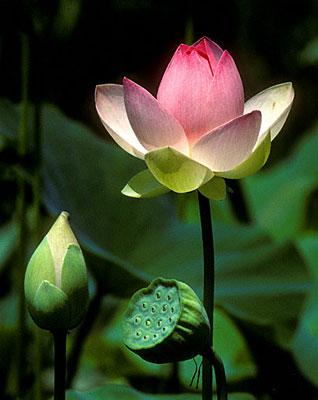Columnists
Sikhs in the Diaspora:
From Seeds to Flowers
by I.J. SINGH
Let's revisit an area that has been vexing mankind as long as it has existed and will continue to torment us until the world ends. But let's do so in the context of our Sikh existence today.
The generation gap!
First a disclaimer; I profess no objectivity. My bias stems from the fact that I stand on one side of the biological, chronological spectrum.
When I came to this country, there were perhaps two or three recognizable Sikhs in New York, and there were fewer in Oregon, where I spent several years. On the streets then, one looked in vain for a familiar face in a sea of strangers. Now, almost half a century later, there are so many in just about any sizeable city that, say, during a Sikh Day Parade, once again, one looks for a familiar face in a sea of strangers - recognizable Sikhs all.
Now I run into a lot of young Sikhs, bright, highly educated, and very connected to their new homeland here, often born or reared in this country, many of them recognizable Sikhs.
Their successes are fantastic, often magical. They are proactively engaged in socially redeeming activities. They are totally in tune with society - Sikh and non-Sikh; just look at their initiatives such as SALDEF, Sikh Coalition, United Sikhs, Sojhi Project, Surat, and their service in feeding the homeless, Teach America, Amnesty International, ACLU, Doctors Without Borders, medical volunteerism, and many more such activities than I can count.
I am in awe of where they are. They are opening windows to the wider world where earlier generations, including mine, couldn't even detect a possible chink.
Largely impatient, they have no time to stand and stare. But isn't that the curse of youth - and also its blessing. Surely, I am not the first to bemoan this. Socrates noted this, as did many others before and after him, as will many more yet to come.
The present-day thinking of the larger society around us is to classify Americans into four overlapping, interdependent generations.
First were the silent generation of mature, patriotic loyalists born between 1922 and 1943, which look at their war- tempered and disciplined lives as "a rendezvous with destiny."
Then came the "Baby Boomers" who gave us free love, hippies, yippies and the yuppies, even DINKS (Double Income, No Kids) and SINKS (Single Income, No Kids) - a generation born between 1943 and 1960, a generation focused on personal growth and gratification, willing to step where none had ever dared.
These idealists were followed by the Gen-Xers (born 1960-80) whose motto seems to have been: I want a life because I deserve it. Techno-literate, pragmatic, unimpressed by authority, sometimes cynical.
And now we have the Millenials or Gen Y (born from 1980 to around the turn of the century). For them, there are no absolutes. "What do I have to do to succeed?" - they want to know. But they are optimistic and street smart. And they are not afraid of diversity in the new global village.
Now, Sikhs have been in the United States for over a century. The first Sikhs arrived around 1896. Yet, I don't think we can sort them out quite the way that I have described above.
Our checkered history in this country speaks of four different waves of Sikh immigrants. There were those who came at the turn of the last century, and into the 1910's and ‘20s. Poorly educated and largely uninformed of the fundamentals of their faith, these Sikhs came here to a country where they could not own land and had no rights of citizenship. Not many of them survived as recognizable Sikhs.
Their struggle is best seen through the odyssey of Sardar Bhagat Singh Thind, who served in the American Army as a recognizable Sikh, won and lost his U.S. citizenship twice in 1918 and 1919, and finally won that right in 1936 after 18 years of protracted struggle.
As a group of immigrants, Asians, including Sikhs and Indians, won the right to vote only in 1946.
The second wave of Sikh immigrants started arriving in the 1950's, after the Second World War, when British power dwindled, and America opened its doors to young students via a variety of scholarships and fellowships. Most of these Sikhs came as young, single students, not very informed about their own religion and culture, but intent on making the most of the opportunity for study and professional development.
They found themselves often isolated at remote university campuses across the country. Many of them married and integrated into the mainstream completely; not many survived as recognizable Sikhs.
The third and fourth waves reflect two kinds of Sikhs: children of the first and second waves, and the new immigrants from Punjab and other parts of the diaspora who came after the easing of the quotas and opening of the visa system in the late 1960's and early 1970's that allowed immigration based on qualifications.
Our community has prospered. The doors to elite academic institutions are now open to their progeny. Young Sikhs, too, can strut in the corridors of power.
True to form, the young are impatient. They see no reason why there should be any discrimination of any sort. And in that, they are right. They know the societal envelope needs to be pushed; that's the only way to equality and success. They know how to press the levers and push the buttons in this society.
At the same time, they see little reason why their elders put up with discriminatory policies when they did. They see that many of their parental generation compromised their beliefs and their faith at the altar of societal and economic success. They often fail to see that the legal and social envelope was pushed by that uneducated generation with its back to the wall.
They don't always see that the first generation of immigrant Sikhs got us the right to vote while the second and third made it possible to win a measure of economic security and prosperity that guaranteed for their progeny entree into the portals of success.
I would like to ask young people not to be so dismissive of the generations who have preceded you - the gray beards who are now so outdated. With any luck, those that are now young, they too, will be dated, sooner rather than later.
Yet, as I like to remind them, I expect every child, in time, to excel the parent and every student to surpass the teacher, just as every new edition of a book must be better than the old, or else it has little reason to exist.
I expect them to become better Sikhs, more accomplished professionals, more successful materially and more productive citizens than the generation of gray beards.
Sometimes I like to tell them to keep in mind that if they can see farther and act more purposefully, it is because the young stand on the shoulders of giants.
The challenge is in the question - where do they plan to take Sikhs and Sikhism 50 years hence in a land far from the connections to Punjab?
Better yet, I would say that in this sapling of Sikhi that has been planted in North America, the first generations are the seeds and the young people are the flowers.
This column, I see, is in imminent danger of becoming a full blown sermon (sermonette?). Let me close it by saying that without seeds there are no flowers, and without flowers the seeds have no purpose, no meaning to their existence, except perhaps to feed the birds.
March 29, 2009
Conversation about this article
1: Tejwant (U.S.A.), March 29, 2009, 6:28 PM.
I.J., thanks for one more insightful essay. As you said, our youth is doing a great job in all different kinds of fields. The results of their outstanding works are and shall be the "Thank you" notes to those who were here before them. Time will make them realize that they are the flowers of today because of the seeds that were planted in yesteryears.
2: Inni Kaur (Fairfield, CT, U.S.A.), March 29, 2009, 9:23 PM.
I.J.: Thanks for a lovely read. These flowers are our joy. These flowers are our strength. Quietly I celebrate their successes, as I watch them blossom and bloom.
3: Gurmeet Kaur (Atlanta, Georgia, U.S.A.), March 30, 2009, 2:59 PM.
Thank you for making us reflect on two beautiful aspects of our being: One - these flowers as you correctly pointed, will bear seeds of their own as they merge with earth in time, adding a stronger specimen of Sikhi to the garden of the universe. Two - it is a hallmark of Sikhi that each Sikh can take pride and shelter in the achievements of any Sikh - they don't have to be genetically related to do so; nor do they have to be indebted to anyone. Sikhi is about rejoicing in the present ... and giving forward.
4: D.J. Singh (U.S.A.), March 30, 2009, 4:50 PM.
We have learnt that "Truth is the highest virtue". We now need to practice "truthful living".






